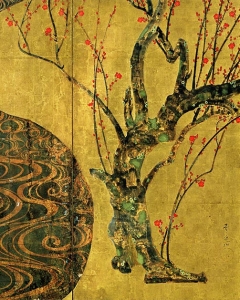From Poetics of the Rhizome. A course set to start soon.
Before the World Wide Web, there was a worldwide web. Human beings are recent guests in that web, guests often rude and destructive, but sometimes stunned with awe, or love.
[T]he Great Subculture which runs underground through all history … [a] tradition that runs without break from Paleo-Siberian Shamanism and Magdalenian cave-painting; through megaliths and Mysteries, astronomers, ritualists, alchemists and Albigensians; gnostics and vagantes, right down to Golden Gate Park.
– Gary Snyder, “Why Tribe”
Rats are rhizomes. Burrows are too, in all of their functions of shelter, supply, movement, evasion, and breakout. The rhizome itself assumes very diverse forms, from ramified surface extension in all directions to concretion into bulbs and tubers. When rats swarm over each other. The rhizome includes the best and the worst: potato and couchgrass, or the weed.… The wisdom of the plants: even when they have roots, there is always an outside where they form a rhizome with something else – with the wind, an animal, human beings…. “Drunkenness as a triumphant irruption of the plant in us.”
– Gilles Deleuze and Felix Guattari, A Thousand Plateaus
I would describe poetry as ecology in the community of words.
– Jed Rasula, This Compost
[T]he separate perspectives of my two eyes converge upon the raven and convene there into a single focus. My senses connect up with each other in the things I perceive … each perceived thing gathers my senses together in a coherent way, and it is this that enables me to experience the thing itself as a center of forces.
– David Abram, The Spell of the Sensuous
This old plum tree is boundless. All at once its blossoms open and of itself the fruit is born. It forms spring; it forms winter. It arouses wind and wild rain…. Its whirling, miraculous transformation has no limit. Furthermore, the treeness of the great earth, high sky, bright sun, and clear moon derives from the treeness of the old plum tree.
– Eihei Dōgen, “Plum Blossoms”
Most of each thing
is whole but contingent
on something about
the nearest one to it
– Fanny Howe, “The Splinter”
Common threads here are multiplicity and interdependence. There’s no one way to be human. There’s no one way to be a poem. There’s no one way to be at all! And no one way to say so.
 My students are you reading. Winter is coming. You’re gonna be asked, early on, to write spring. The image atop is Red and White Plum Blossoms by Ogata Kôrin. You can read a nice treatment of it here.
My students are you reading. Winter is coming. You’re gonna be asked, early on, to write spring. The image atop is Red and White Plum Blossoms by Ogata Kôrin. You can read a nice treatment of it here.
Here’s what Dōgen Zenji, my teacher’s teacher’s teacher, and on, has to say about painting spring:
When you paint spring, do not paint willows, plums, peaches, or apricots – just paint spring. To paint willows, plums, peaches, or apricots is to paint willows, plums, peaches, or apricots. It is not yet painting spring.
It is not that spring cannot be painted. My late master, old buddha, he alone was a sharp-pointed brush that painted spring.
So be the sharp-pointed brush painting spring. Or whatever.


One thought on “A taste of rhizome mind”